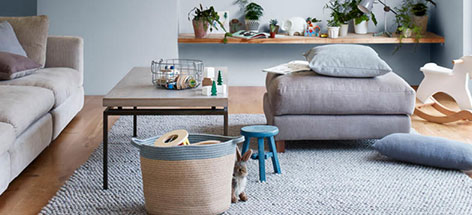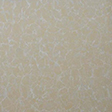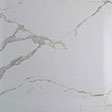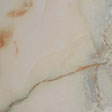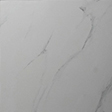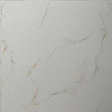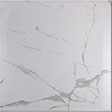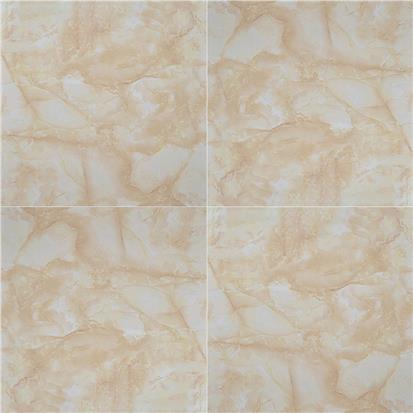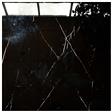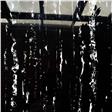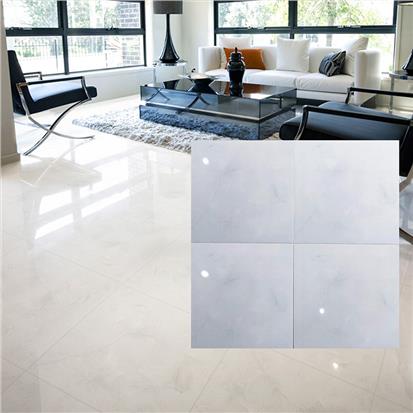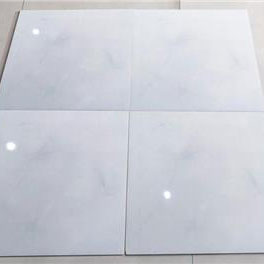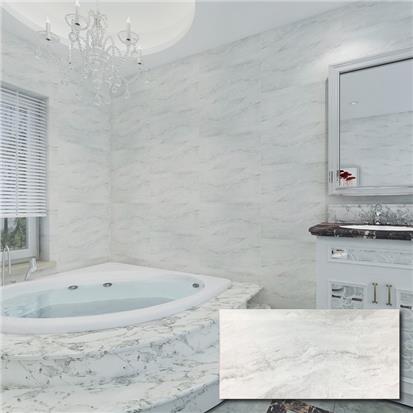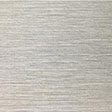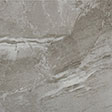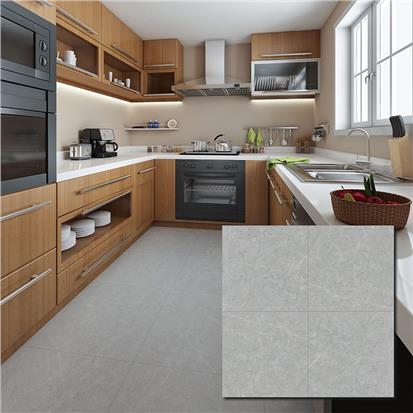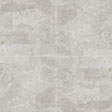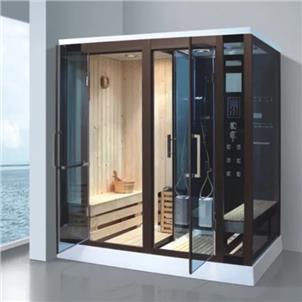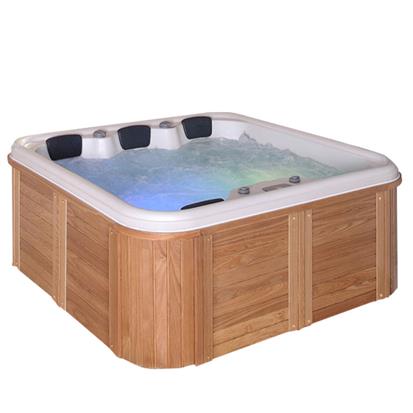Whether the quality of the tiles is excellent or not, you also need various index parameters to judge. When buying tiles, in addition to looking at the price and the effect of the tile surface, it is important to understand the performance index behind the tiles, here we share 9 hard indicators to choose high-quality tiles.
Tile Buying Guide - 9 Indicators To Help You Choose High-Quality Tiles!
1. Water absorption rate
The strength of ceramic tiles is closely linked to the water absorption rate. Water absorption is low, the tiles are dense, the strength of the tiles is high, and vice versa. Tile water absorption rate is not qualified and will affect the quality of construction, tile paving easy to appears after a variety of quality defects, thus causing consumer disputes.
Inspection standards
Ceramic tile goods according to the water absorption rate can be divided into five categories, namely porcelain tiles (E ≤ 0.5%), stoneware tiles (0.5% < E ≤ 3%), fine stoneware tiles (3% < E ≤ 6%), stoneware tiles (6% < E ≤ 10%) and ceramic tiles (E > 10%), water absorption rate is not in the corresponding category range of products can be regarded as a failure.
When buying, you can use the drip test: put a drop of water on the back of the ceramic tile and observe the diffusion of the water, the faster the diffusion of the tile, the greater the absorption rate, and vice versa, the smaller the absorption rate.
2. Dimensional deviations
The dimensions of ceramic tiles include side length (length, width), side straightness, straightness angle and surface flatness. The dimensional deviation is the permissible deviation of these dimensional averages for the working dimensions. Tiles are fired at high temperatures and deformation cannot be completely avoided; deformation within the standard regulations can be considered normal.
Testing criteria
Common deformation (side curvature) range for: porcelain polished tiles ± 0.2% (maximum deviation ≤ 2.0mm); other porcelain tiles for ± 0.5%; colour glazed tiles for ± 0.5%; glazed tiles for + 0.5% - 0.3%.
A simpler test can be used when purchasing.
Corner verticality - lay four or more pieces flat on a flat sandy surface in a uniform direction according to the bottom logo to see if the four edges meet flat.
Flatness - stack the tiles face to face, align the four corners and turn one of them, if it is easy to turn it means that the tiles are not flat enough and may have a convex arch.
3. Radionuclide limits
Radionuclide limit is an important indicator to test the safety of decoration materials. The decay of radioactive elements can produce radiation, and excessive radiation can cause damage to the human body. Usually, the product radioactivity limit is high in addition to the raw materials themselves radioactive, but also may be the raw material formula unreasonable, some manufacturers one-sided pursuit of ceramic tile decorative effect of excessive addition of some radioactive minerals.
Inspection standards
The national mandatory standard "building materials radionuclide limit" (GB 6566) will be the level of radioactivity of building decoration materials in A, B, and C. A class decoration material radioactivity level is the lowest, production and marketing and use of the scope is not restricted, can be used for indoor finishes. The natural radium-226, thorium-232 and potassium-40 radionuclides meet the requirements of IRa≤1.0 and Iγ≤1.3 at the same time.
4. Slip resistance
Slip resistance refers to the performance of ceramic floor tiles in overcoming slippage in special environments and is mainly related to their coefficient of friction.
Test criteria
The new national standard has increased the standard for the coefficient of friction of floor tiles, requiring a test result of a single value ≥ 0.50 (dry method). From the perspective of purchasing tiles, whether the tile surface is rough, with or without the addition of anti-slip materials (anti-slip glaze, anti-slip coating, anti-slip liquid, etc.), etc., are important factors affecting the anti-slip performance of tiles.
5. Hardness
High-quality tiles are generally hard and tough and are not easy to break and deform after paving.
Inspection criteria
When buying can be used to listen to the sound of knocking: take two tiles and gently knock, if the sound of the tile is crisp, with some metal sound is indicative of its inherent good quality, high hardness; if the sound is hoarse, the tile may be hidden cracks, hardness is not high.
6. Abrasion resistance
Abrasion resistance is an important indicator to test the degree of wear and tear of the tile, the higher the abrasion resistance of the tile is not easy to appear scratches.
Inspection standards
The "ceramic tile" new national standard for glazed and unglazed tiles has clear provisions for wear resistance: for water absorption rate of less than 3% of unglazed floor tiles, its wear resistance volume to be less than 175mm²; for water absorption rate of more than 3% and less than 6% of unglazed floor tiles, its wear resistance volume to be less than 345mm²; for water absorption rate of more than 6% and less than 10% of unglazed floor tiles, its wear resistance volume to be less than 540mm ². For glazed floor tile wear resistance, "ceramic tile" new national standard is divided from 0 to 5 a total of six levels, respectively, with different "visible wear grinding number" corresponds to, the higher the level, means that the tile wears resistance is better.
7. Glaze crack resistance
This indicator is for glazed tiles only and refers to the ability of the glaze layer of the ceramic product to resist changes in the physical environment and prevent microscopic cracks. Poor resistance to glaze cracking tiles, paving is prone to brick cracks, irregular fine cracks when slight, serious may be broken and flaking.
Test criteria
The professional test of glaze crack resistance is to subject the whole tile to high-pressure steam in the autoclave, and then stain from the glaze to observe the glaze cracking of the tile.
General consumers can gently touch the tile glaze when buying, good glaze feels delicate and smooth, with no bumpy feeling. Glossy crystal bright, matt glaze soft and comfortable. Observe the glaze under a strong light to ensure that there are no glaze defects such as blistering and small holes.
8. Breaking strength
An important indicator of tile strength, generally referring to the tile's ability to resist compression, the level of this performance indicator directly affects the service life of ceramic tiles. Too low strength can easily lead to ceramic tile fracture, the use of the process will bring potential risks to personal safety.
Inspection criteria
Porcelain tile thickness ≥ 7.5mm, the average breaking strength is not less than 1300n; ceramic tile thickness ≥ 7.5mm, the average breaking strength is not less than 600n.
9. modulus of rupture
Again, this is a key indicator of the strength of a tile. Products with a low modulus of rupture are prone to cracking, rupture or surface defects in use. There are many factors that can cause a low modulus of rupture, mainly due to unreasonable raw material formulations, poor control of production processes such as forming and firing temperatures and times.
Inspection criteria
Porcelain tiles have an average modulus of fracture of not less than 35mpa and a single value of not less than 32mpa, ceramic tiles have an average modulus of fracture of not less than 15mpa and a single value of not less than 12mpa.
 EN
EN FR
FR PT
PT AR
AR
